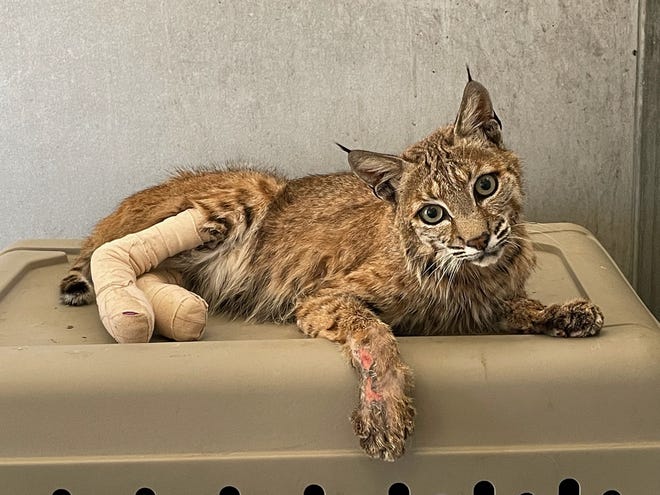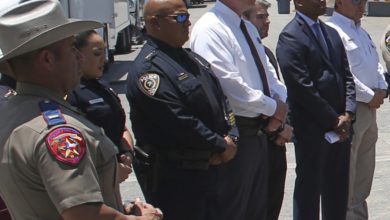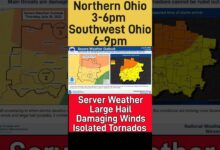
REDDING, Calif. — This year, Axel Hunnicutt ran through burning forests, slogged through streams and hiked steep mountain terrain trying to find seven black bears injured in Siskiyou County's Lava and Antelope fires.
One he never found. Five were healthy enough to evade him from capturing them. The seventh — a 16-pound hamburger-eating cub dubbed Smokey Junior — went home with him.
Hunnicutt is a California Department of Fish and Wildlife biologist specializing in carnivores. He and the CDFW are part the Wildlife Disaster Network, a coalition of University of California at Davis vets and other professionals saving animals from this year’s history-making wildfires.
Drought throughout much of the state, triple-digit summers and wind mean fires are moving faster than usual. These can overtake animals trying to flee.
“I have the impression that there have been (fewer) burned animals rescued,” said Lais Costa, a veterinarian and the director of operations for the Veterinary Emergency Response Team at UC Davis. “This might be because there has been a better evacuation effort or because those animals (died from their injuries) and were not able to be rescued.”

Others, like Lava Bob, were saved.
During the Lava Fire in July, Hunnicutt responded to a report of an “emaciated mountain lion” loose on a Lake Shastina golf course.
When he arrived he found an injured and starving bobcat. “His paws were so burnt. He was so skinny — only 16 pounds. I was surprised I could get a dart in him,” Hunnicutt said.
The Siskiyou Humane Society stabilized Lava Bob until he could be taken to Shasta Wildlife Rescue and Rehabilitation in Redding, then to Gold Country Wildlife Rescue for burn therapies on July 11.
“He was just skin and bones," Gold Country Wildlife Rescue director Sallysue Stein said. "He had second third and fourth-degree burns to his legs.”
The cat is recovering nicely, she said, and weighs around 35 pounds — a good weight for a bobcat.
“Now he yowls and growls and drools, and comes stalking toward us. We must look delicious," she joked. "He’s gorgeous.”
Lava Bob is scheduled to be released later in October, Stein said.

Rescuers cared for more than 2,000 animals due to fires
As for bears, they get burned often during wildfires because their instinct is to climb a tree when there’s danger, Hunnicutt said.
Hunnicutt rescued Smokey Junior — later dubbed "Leo" — from the middle of the Antelope Fire in August. Firefighters kept the cub busy with a cheeseburger until Hunnicutt got there. He brought him home overnight until the CDFW could move the cub to Gold Country Wildlife Rescue in Auburn where UC Davis veterinarians treated his burns.

Gold Country Wildlife Rescue cared for many animals rescued from California's disastrous fires, including bear, fox and bobcat patients with burns severe enough to require the clinic’s special treatments: Tilapia fish skin to cover burns, pulsed electromagnetic field therapy, special topical creams and acupuncture for pain relief.
While UC Davis vets care for wildlife through the Wildlife Disaster Network, they also deploy teams to help pets and livestock at fires through the school’s Veterinary Emergency Response Team. Some of the domesticated patients included cats, dogs, pet birds, exotic pets, chickens, waterfowl, horses, donkeys, mules, cattle, goats, sheep, alpacas and llamas.

VERT vets cared for more than 2,000 animals that were housed at four shelters. They also sent field teams to search for injured animals in the Caldor Fire burn area, Costa said.
They also visited more than 200 animals in Plumas County animal shelters, and another 68 dogs and 23 cats evacuated with their people in Plumas County Red Cross shelters and hotels — all while the Dixie Fire consumed 963,309 acres around them.
Most animals rescued from fires have the same injuries, Costa said. That's burns, dehydration, respiratory problems from smoke inhalation, traumatic lesions and hunger — even starvation.
Evacuated sheltered pets who were healthy when they arrived can develop medical problems, Costa said. Sometimes they won’t eat or drink, and are stressed from the trauma of evacuating suddenly and living with so many animals in an unfamiliar place.
Keeping wildlife wild

While pets go home to their owners or are adopted into new homes, most wild animals able to fend for themselves are released into unburned territory as close as possible to the burn areas in which they were found, Shasta Wildlife Rescue and Rehabilitation spokeswoman Karlene Stoker said. That’s after they’re completely healthy.
And grumpy.
“Everyone’s worried if they’re going to be habituated (to humans),” Hunnicutt said, “but vets poke and prod them so much during exams, they can’t wait to get away.”
“(When released), some will run far enough away from you so you can’t re-catch them — then look back at you and snarl,” Stoker said. "Others just keep going."
After fires, many animal populations seem to bounce back, CDFW spokesman Peter Tira said. “We’ve learned how resilient nature is.”
Most animals that escape a fire come back pretty soon after the area cools and vegetation starts to grow back, he said.
The CDFW is exploring ways to make areas more fire-resistant and resilient after fires to protect animals and their territory, Tira said. That includes adding native plants and removing invasive ones that burn easily.
Animals are helping, he said. The CDFW leases wilderness land to cattle, goat and sheep farmers. Their animals munch down dry flammable brush as they graze.
From January to September 2021, more than 7,700 fires burned more than 2.4 million acres, four of which are among the 20 largest fires on state record, according to the California Department of Forestry and Fire Protection. The Caldor and Dixie fires are also among the 20 most destructive in state history.
Follow Record Searchlight reporter Jessica Skropanic on Twitter: @RS_JSkropanic









